Jeff Rowe and Kyler Spears | 1hr 39min

It is not enough for a Teenage Mutant Ninja Turtles movie to pay homage to the outcasts of society merely by adapting the comic books series’ basic narrative conventions. It takes an anarchic rejuvenation of the medium itself for Mutant Mayhem to embrace the Turtles’ upbeat spirit of rebellion, veering wildly away from the trend of hyperrealist 3D animation that has seen Disney’s visual creativity dwindle in recent years. Sony’s Spider-Verse series can be largely credited for leading the way here, inventively blending computer and traditional animation to create dynamic illustrations that could be ripped straight out of graphic novels, and yet at the same time Mutant Mayhem may also be the first to follow in its footsteps without falling under its shadow.
It is the grungy imperfections rather than any aesthetic sophistication which gives Jeff Rowe’s Teenage Mutant Ninja Turtles adaptation such a tactile quality, emulating the sort of colourful scrawls that could be found in a teenager’s sketchbook. Rough doodles are scribbled all through the streets and sewers of New York City, roughly forming a not-quite-perfectly round moon and chugging out squiggles from the exhaust pipes of shabby cars, while murky hues and toxic neons illuminate the urban scenery with a radioactive ambience. The visual compositions themselves are far beyond worthy of a school project too – there are frames in Mutant Mayhem worthy of a pop art exhibition, drenching the city with noir-like shadows even as our heroic quartet light them up with their buoyant humour.
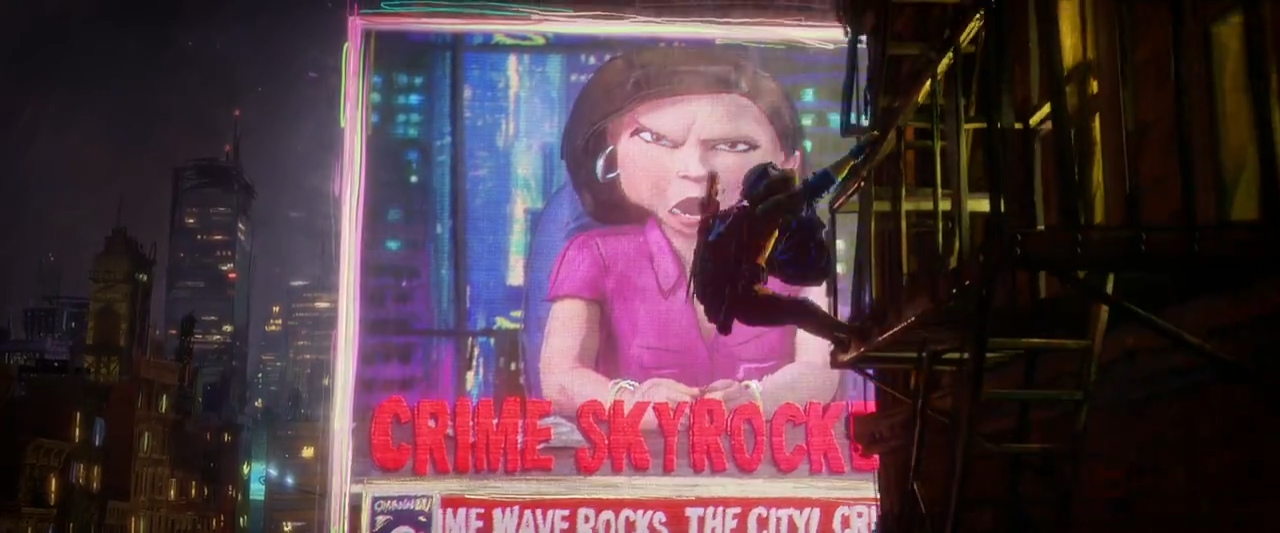
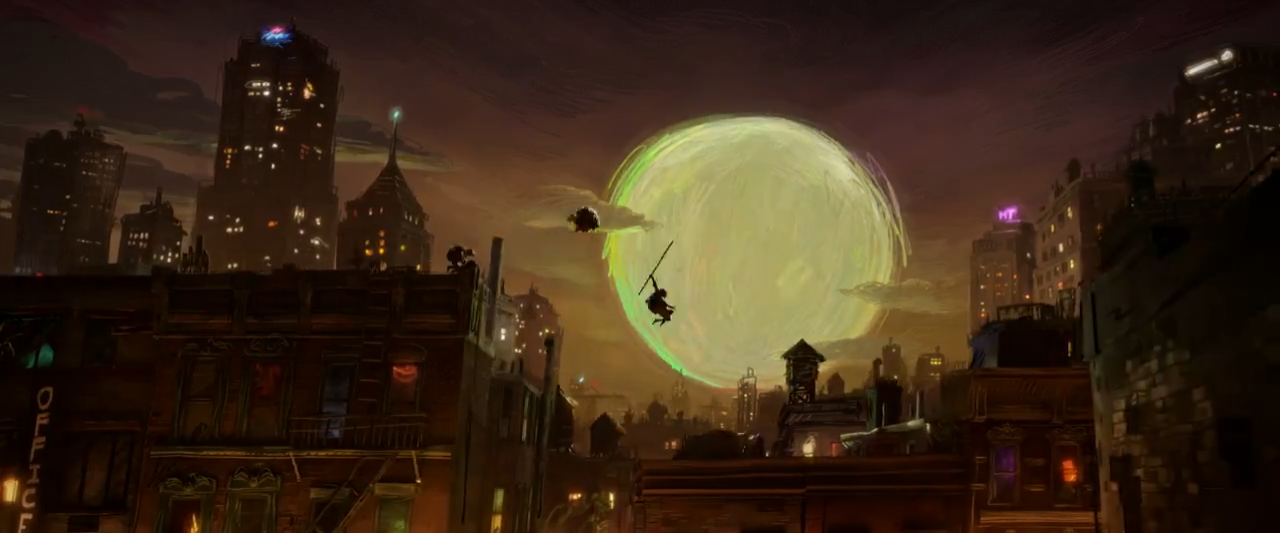
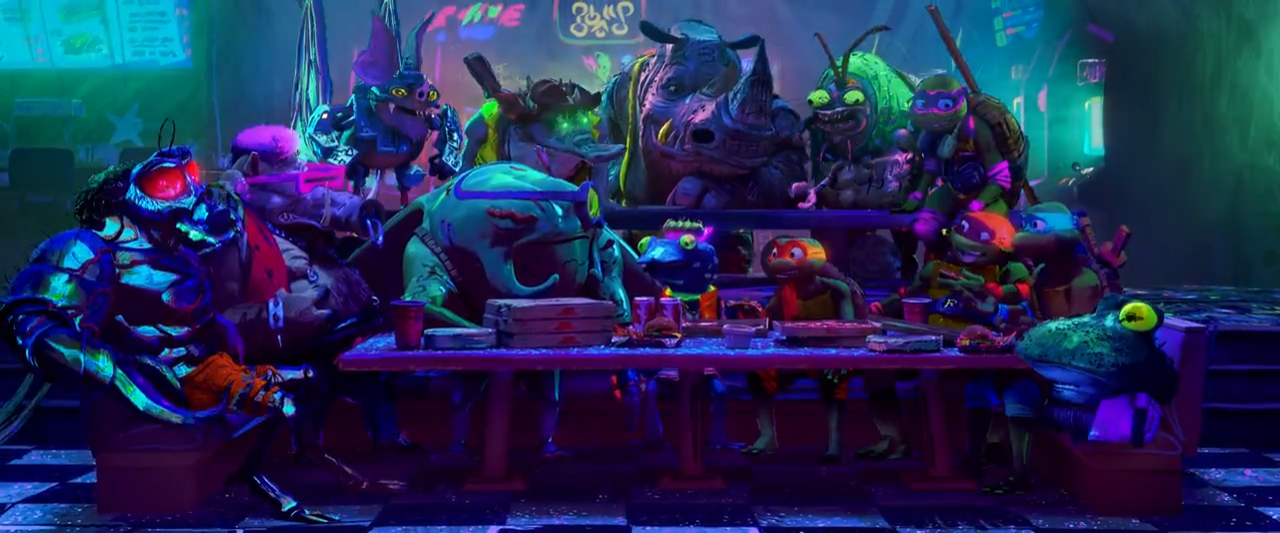
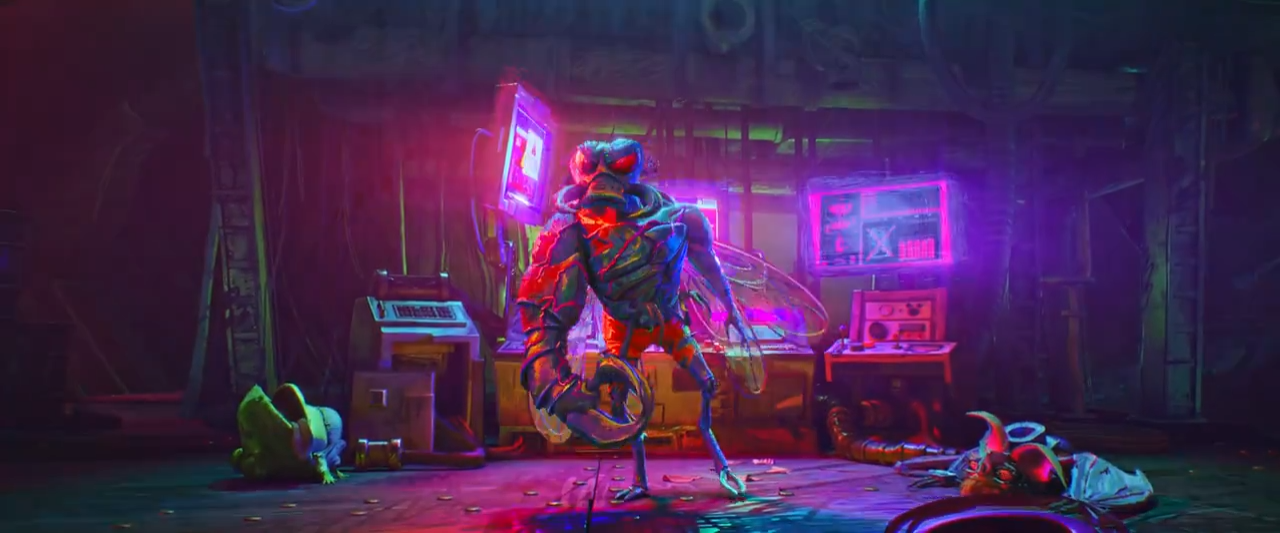
With Rowe applying a jerky frame rate as well, action scenes are imbued with a scratchy kineticism that only emphasises the eccentric mannerisms of humans and mutants alike, all of whom are designed as idiosyncratic caricatures. For brothers Donatello, Michelangelo, Leonardo, and Raphael though, this unseemliness is the source of both great pride and insecurity, thus forming the foundation of a coming-of-age tale which underlies Mutant Mayhem’s superhero antics.
Quite crucially, this version of Teenage Mutant Ninja Turtles casts relatively unknown teenagers as its four leads for the first time in the franchise’s history, even while the rest of the cast is filled with big names such as Ice Cube, Jackie Chan, and Paul Rudd. Rather than recording their lines separately, Micah Abbey, Shamon Brown Jr., Nicolas Cantu, and Brady Noon were able to build camaraderie in the studio together, as their voice performance overlap and improvise to reveal an authentically juvenile innocence.
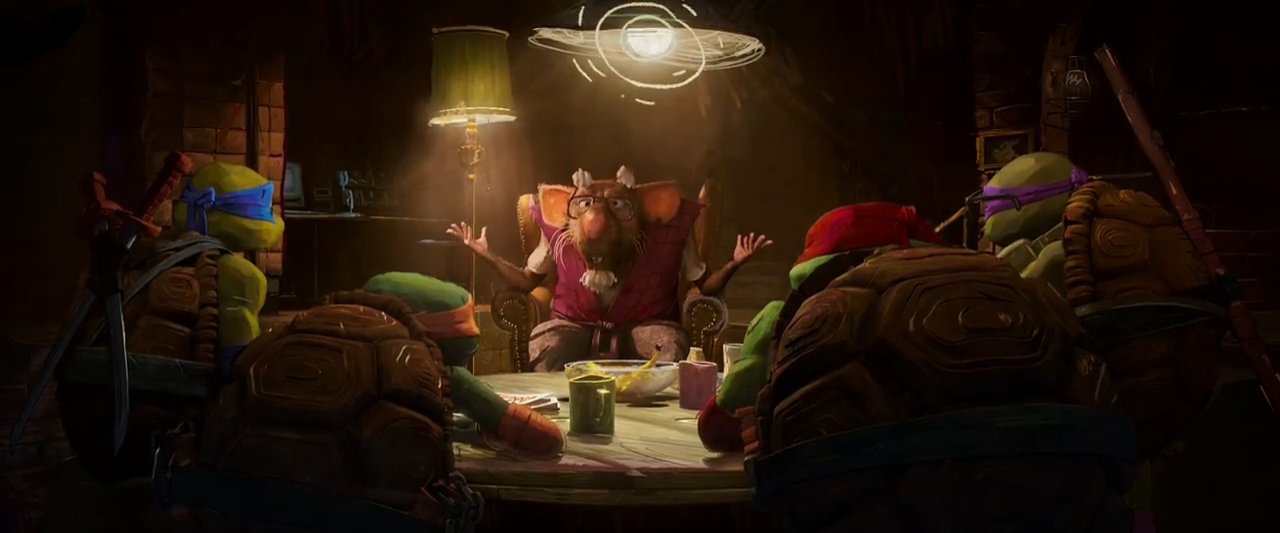
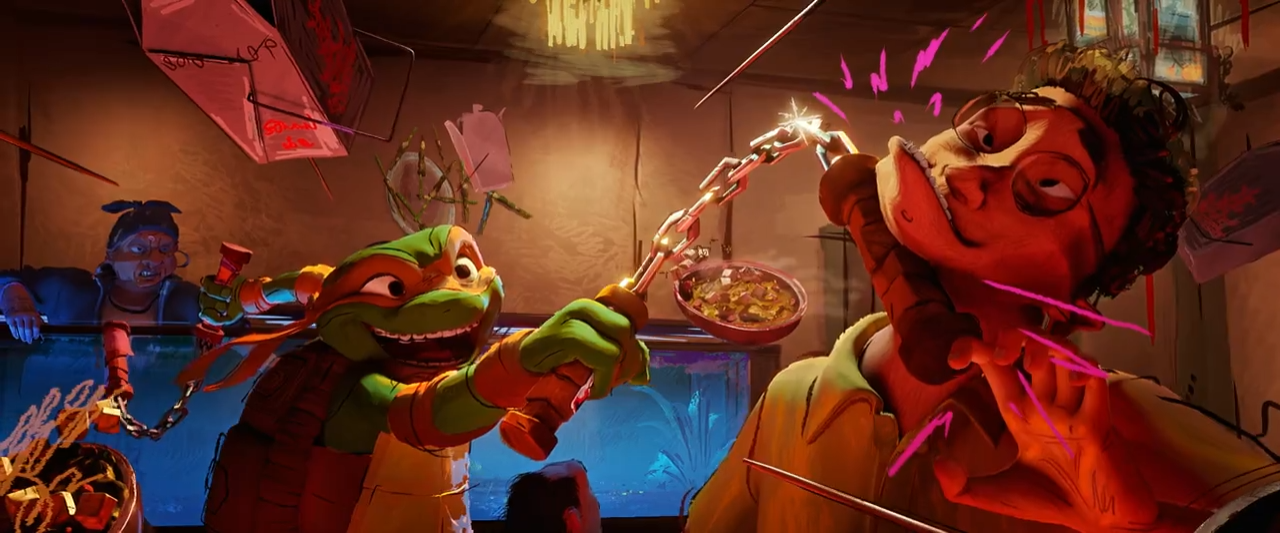
As a result, the Turtles’ exclusion from the human world is made all the more heartbreaking. A simple desire to be part of an accepting crowd is seemingly at the core of their journeys, and yet when they meet a gang of similarly mutated creatures led by supervillain Superfly and are enthusiastically welcomed into their plans for world domination, they must inevitably reassess their priorities. Even if they are to save humanity from enslavement, they will still likely be treated with disdain and horror, but this doesn’t make their efforts any less righteous.
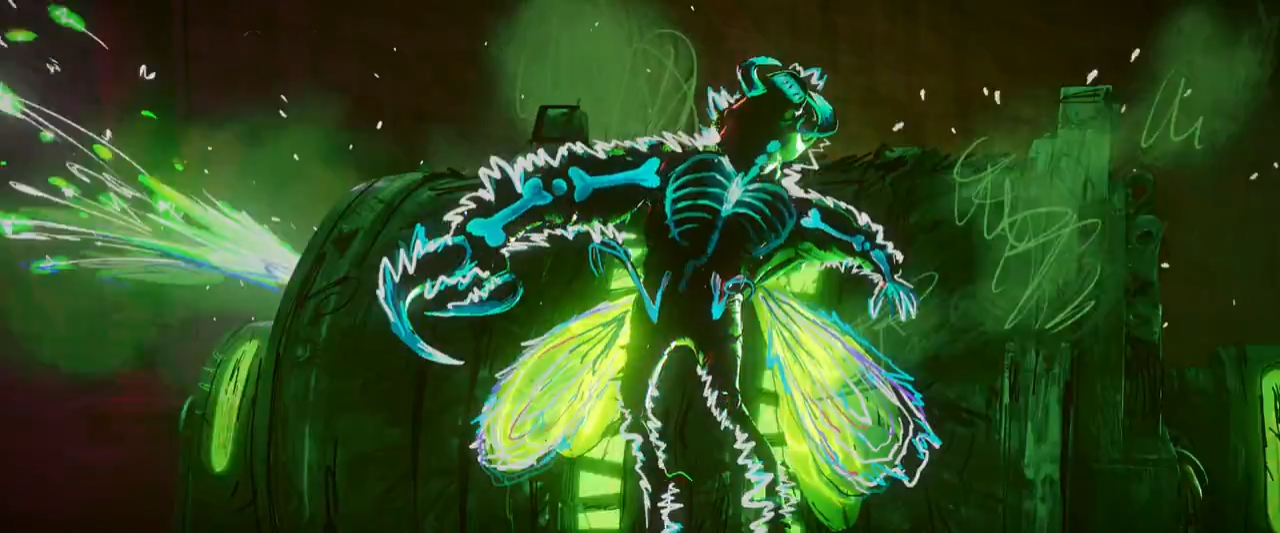
No doubt their new human friend April has something to do with this moral enlightenment among the Turtles, becoming a bridge between society and its outsiders who she finds surprisingly common ground with. As Mutant Mayhem approaches its magnificent kaiju-inspired showdown, Rowe weaves her journey in with several other loose narrative threads, perhaps only neglecting the subplot concerning evil scientist Cynthia Utrom who is more than likely being kept for a potential sequel. This formal weakness is minor though, especially when it is drowned out by such astounding creativity and rich character work. Any version of Mutant Mayhem that might have conformed to the 3D animation standards of the past thirty or so years would simply not carry the same sense of thrilling defiance as this, as from its heart of revolt spills a world of good-natured humour and turbulence, vividly drawn with all the chaotic passion of adolescence.
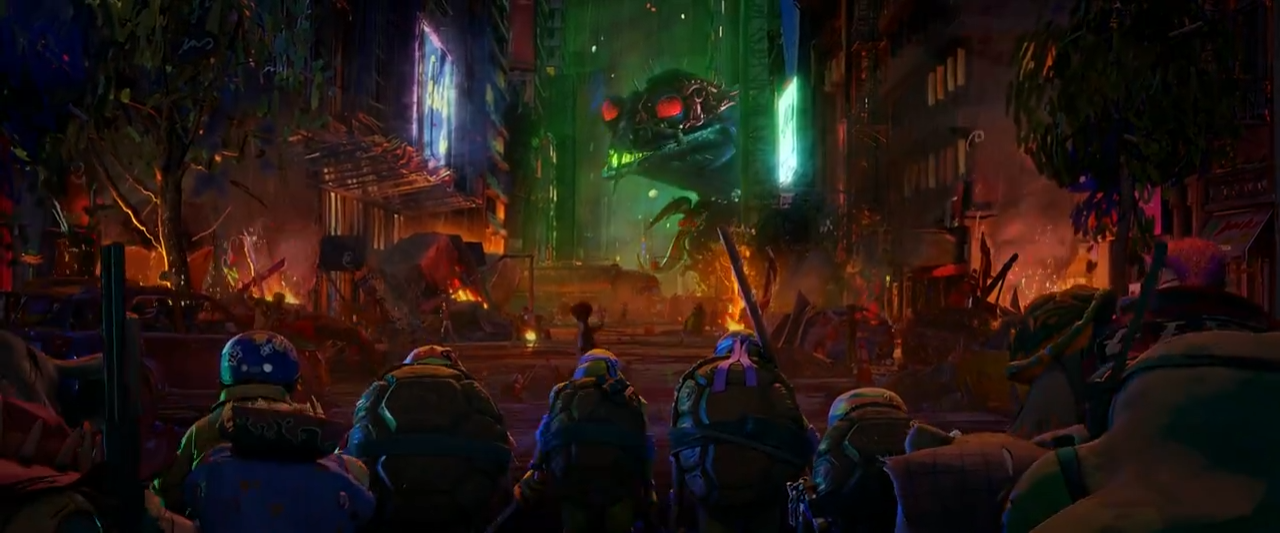
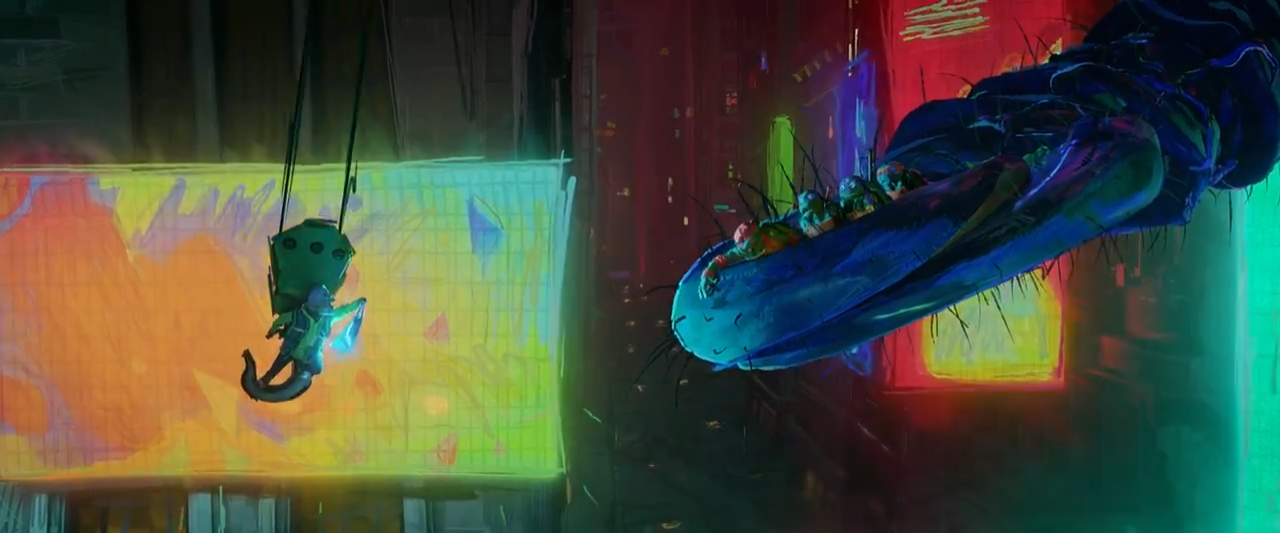
Teenage Mutant Ninja Turtles: Mutant Mayhem is currently available to rent or buy on Apple TV, YouTube, and Amazon Video, and physical media copies are available on Amazon.

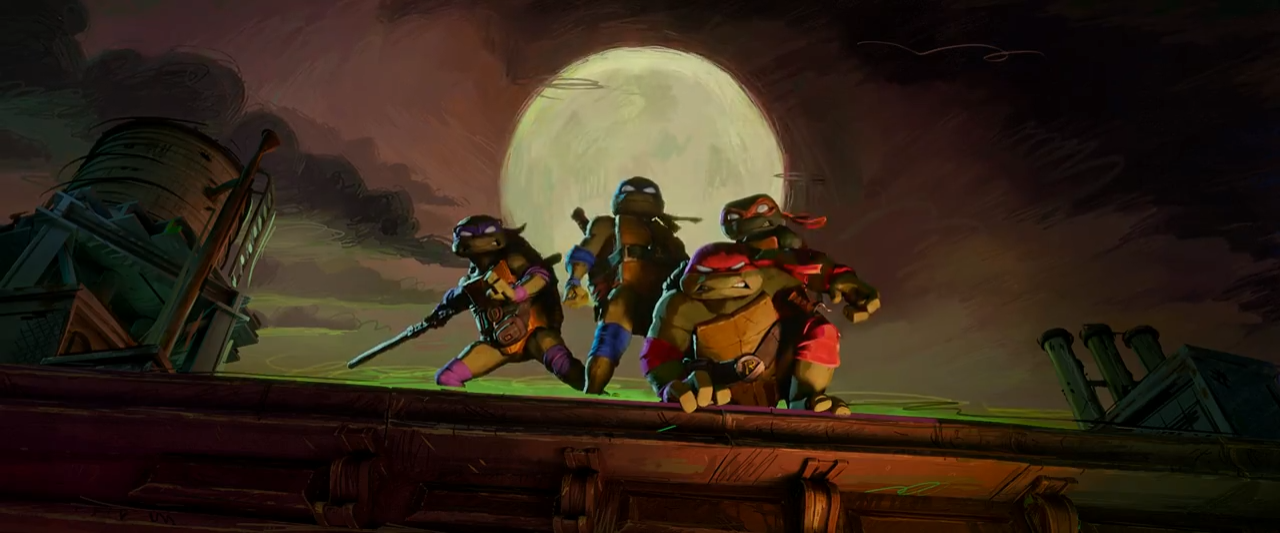
Pingback: The Best Films of 2023 – Scene by Green